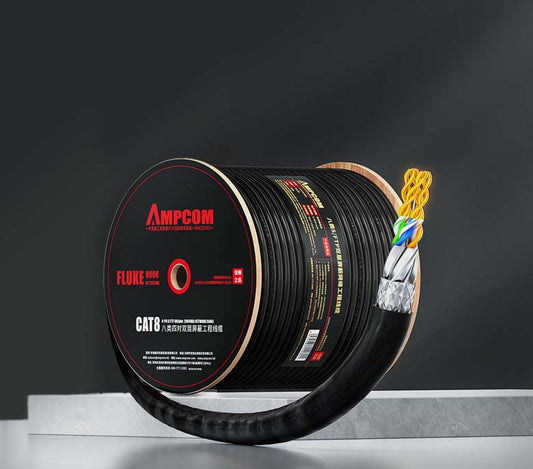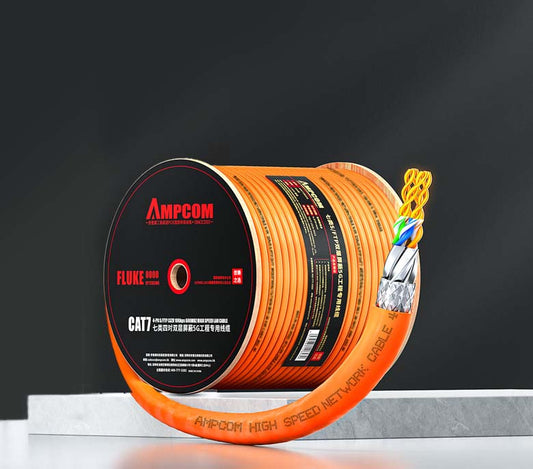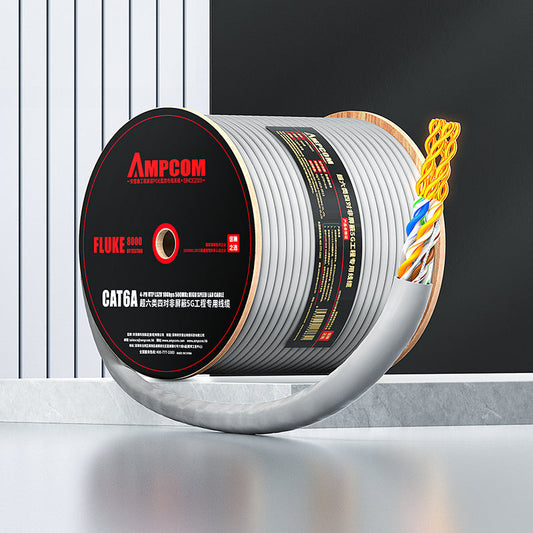Why the Cheapest Network Cable Isn’t Always the Best Choice: Understanding Total Cost of Ownership
When it comes to selecting high-performance network cables, many businesses focus solely on the initial purchase price. After all, who wouldn’t want to save money upfront? But the reality is, the cheapest cables often come with hidden costs that can significantly impact your bottom line. That’s where the concept of Total Cost of Ownership (TCO) comes in. Rather than looking at the immediate cost alone, businesses need to consider long-term expenses like maintenance, repairs, downtime, and overall performance. In this article, we’ll explore why the cheapest cable isn’t always the best investment and how a higher-quality Ethernet cable solution can save you more money in the long run.
To make the best decision for your network infrastructure, you must look beyond the initial cost and evaluate the total cost of owning and maintaining network cabling systems. It’s easy to be lured by low prices, but the hidden costs can add up quickly, especially when performance is compromised. A recent case study of two companies demonstrates the difference in TCO when choosing between cheap and high-quality cables.
Company A, a mid-sized enterprise, opted for the cheapest Cat5e network cables available to reduce initial costs. However, within a year, the company faced frequent network outages due to poor-quality cables. The cables failed regularly, leading to significant downtime, disrupted business operations, and increasing IT support costs. Maintenance and repair became an ongoing expense that exceeded the original savings from the low-cost cables. Worse still, the network performance suffered, with slower speeds and unreliable connections, impacting productivity across the company.
In contrast, Company B invested in high-quality Cat6a cables with a higher upfront cost. Although they spent more initially, the company benefited from a much more stable and reliable network infrastructure. With fewer repairs, no downtime, and better overall performance, they experienced greater productivity and avoided the costly disruptions seen at Company A. Over time, the additional upfront cost proved to be a sound investment. Not only did they save on maintenance, but they also improved their overall operational efficiency. This is a prime example of how TCO can make or break your network’s success.
Understanding Total Cost of Ownership in Network Cabling
The Total Cost of Ownership (TCO) is a financial estimate used to assess the direct and indirect costs of a product or system over its entire lifecycle. When applied to network cabling infrastructure, TCO takes into account more than just the upfront purchase price. The full picture includes installation, maintenance, energy usage, and even disposal costs. Understanding TCO is essential when deciding between low-cost and high-quality cables.
Here are some important factors to consider when evaluating the TCO of network cables:
- Initial Purchase Price: While this is the most obvious cost, it should not be the sole factor in your decision-making process.
- Installation Costs: Low-quality cables might appear cheap, but their installation could be more time-consuming and expensive due to the extra labor required for troubleshooting or ensuring a secure fit.
- Maintenance and Repair: The costs of repairs and replacements may far exceed the initial savings. Highlight the total costs that businesses face when using low-quality cables, including the disruption to business operations.
- Performance Issues: Poor network performance due to unreliable cables can lead to slow speeds, downtime, and ultimately a decrease in productivity. This hidden cost often goes unnoticed but can have a serious impact on business operations.
- Energy Consumption: Some low-quality cables may cause more signal interference, which requires additional power for network devices to compensate, leading to higher energy costs.
- Downtime and Lost Productivity: A cable failure can cause significant downtime, leading to lost sales, missed deadlines, and frustrated employees. These indirect costs can be much higher than the initial price difference between cables.
The Risks of Choosing Cheap Cables
Choosing the cheapest network cables may seem like a good idea at first, but it can end up costing you far more in the long run. Cheap cables are often made from substandard materials, which increases the likelihood of failure and reduces their overall lifespan. Frequent cable failures can lead to increased maintenance costs, system downtime, and poor network performance. Additionally, poor-quality cables can introduce security vulnerabilities that could expose your network to cyber threats. These risks should not be overlooked when evaluating your network infrastructure.
In fact, many businesses don’t realize how significant the total cost of a poor-quality network cable can be. While the initial cost is low, the ongoing repairs and decreased productivity quickly outweigh the initial savings. It’s crucial to assess your total investment in cables, not just the price tag.
The Value of High-Quality Cables
High-quality network cables offer greater durability and reliability, which can significantly reduce long-term costs. When you choose a high-quality cable, you are investing in a product that will last longer, require fewer repairs, and provide more consistent performance. This means fewer disruptions to your network, better overall productivity, and fewer hidden costs. Companies that prioritize quality cables are better able to maintain a stable, high-performance network, which in turn boosts efficiency and reduces the likelihood of downtime.
Moreover, quality cables tend to be more energy-efficient, reducing power consumption and saving money in the long run. They are also better equipped to handle growing network demands as businesses scale, ensuring that your investment remains valuable as your network infrastructure evolves.
Conclusion: Choosing Quality for Long-Term Savings
When it comes to network cables, opting for the cheapest option might save you money initially, but the hidden costs can add up quickly. The Total Cost of Ownership (TCO) approach reveals that cheap cables often lead to higher maintenance costs, performance issues, and downtime. By investing in high-quality cables, businesses can save on repairs, improve network performance, and enjoy long-term cost savings.
Whether you’re setting up a new network or upgrading your current infrastructure, always consider the long-term value of your investment. Quality cables are a sound business decision that will pay off in the long run. Make sure to look at the full picture—performance, durability, and overall cost—before making your choice.
For further information on choosing the right network cables, or to explore our high-quality cable procurement solutions, feel free to reach out for expert advice.
For more information, check out our guide on:
Comprehensive Network Cable Purchasing Guide for Businesses
the impact of wire gauge on Ethernet cable performance.



